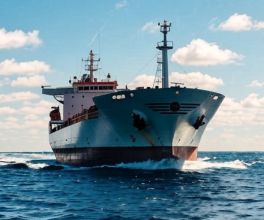 The larger Capesizes have seen a considerable improvement in Pacific-based round voyage rates with as much as US$ 33,000 daily now readily fixable on vessels of 182,000 dwt based on S.China delivery. This is some US$ 2,000 higher than similar business done at the end of last week with a steady recovery in inquiry levels helping owners to pursue substantial premiums over last-done levels. Such vessels are having to settle for slightly higher than last-done in the Atlantic with TARVs now in the US$ 27,000s. (For news & updates on dry bulk shipbroking, subscribe to the BMTI Daily Report.)
The larger Capesizes have seen a considerable improvement in Pacific-based round voyage rates with as much as US$ 33,000 daily now readily fixable on vessels of 182,000 dwt based on S.China delivery. This is some US$ 2,000 higher than similar business done at the end of last week with a steady recovery in inquiry levels helping owners to pursue substantial premiums over last-done levels. Such vessels are having to settle for slightly higher than last-done in the Atlantic with TARVs now in the US$ 27,000s. (For news & updates on dry bulk shipbroking, subscribe to the BMTI Daily Report.)
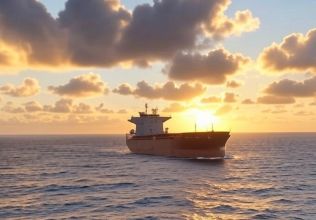 The smallest bulkers have been impressively resilient in the lead-up to Q4 with Handysize rates even gaining momentum in the Atlantic as UKC trips to ECSA move to the US$ 11,000s on ships of 42,000 dwt and US$12,000s on 58,000 dwt. Trips from the Continent to the USEC are also climbing with talk of US$ 14,000 daily having been secured on tonnage of 48,000 dwt. In the eastern basin, northbound trips from SE Asia to Singapore have remained at around US$ 13,500-14,500 with market forces balanced. Negotiations are fraught for Handysizes in the Baltic with a wide range of rate levels having been reported for a 2000-built Handy of 32,000 dwt moving from the Russian Baltic (believed to be St. Petersburg) to India with MOP. Some said that the rate was in the area of US$ 12,000 daily while others insisted it was concluded at upwards of US$ 14,500 daily even as most accounts agreed that the deal was done on APS basis. A 2017-built Ultra of 63,300 dwt is said to be on subs at US$ 30,000 ex-USG via SWP to NCSA. (For news & updates on dry bulk shipbroking, subscribe to the BMTI Daily Report.)
The smallest bulkers have been impressively resilient in the lead-up to Q4 with Handysize rates even gaining momentum in the Atlantic as UKC trips to ECSA move to the US$ 11,000s on ships of 42,000 dwt and US$12,000s on 58,000 dwt. Trips from the Continent to the USEC are also climbing with talk of US$ 14,000 daily having been secured on tonnage of 48,000 dwt. In the eastern basin, northbound trips from SE Asia to Singapore have remained at around US$ 13,500-14,500 with market forces balanced. Negotiations are fraught for Handysizes in the Baltic with a wide range of rate levels having been reported for a 2000-built Handy of 32,000 dwt moving from the Russian Baltic (believed to be St. Petersburg) to India with MOP. Some said that the rate was in the area of US$ 12,000 daily while others insisted it was concluded at upwards of US$ 14,500 daily even as most accounts agreed that the deal was done on APS basis. A 2017-built Ultra of 63,300 dwt is said to be on subs at US$ 30,000 ex-USG via SWP to NCSA. (For news & updates on dry bulk shipbroking, subscribe to the BMTI Daily Report.)
Pressure has descended upon the Panamaxes with tonnage of 82,000 dwt now lucky to get something in the US$ 18,000s for trans-Atlantic RVs while 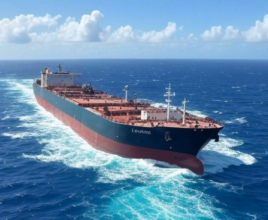 charterers push for US$17,000s on mid-month positions. Front haul business on Kamsarmax tonnage remains in the US$ 25,000s, though daily discounts of US$ 500 on the spot market could see those levels eroded by the end of week if an early month rebound in cargoes fails to happen over the next few days. Handysizes have been looking stronger in the At¬lantic thanks to the resurgence in USG delivery rates having pushed inter-Atlantic rates (USG to UKC) on 38-42,000 ships from the high US$ 19,000s to the lower US$ 20,000s in just 48 hours. A 2014-built vessel of 37,000 dwt (believed to be the “T Clever”) open Cristobal for 3-7 September was said to be on subs for delivery SW Pass and WC redelivery with grains at a rate of around US$ 21,000 daily. A vessel of 56,000 dwt (2007-built) ex-Karachi was reported to have secured US$ 13,000 via AG to WCI, though others said the rate was closer to US$ 13,500 daily. (For news & updates on dry bulk shipbroking, subscribe to the BMTI Daily Report.)
charterers push for US$17,000s on mid-month positions. Front haul business on Kamsarmax tonnage remains in the US$ 25,000s, though daily discounts of US$ 500 on the spot market could see those levels eroded by the end of week if an early month rebound in cargoes fails to happen over the next few days. Handysizes have been looking stronger in the At¬lantic thanks to the resurgence in USG delivery rates having pushed inter-Atlantic rates (USG to UKC) on 38-42,000 ships from the high US$ 19,000s to the lower US$ 20,000s in just 48 hours. A 2014-built vessel of 37,000 dwt (believed to be the “T Clever”) open Cristobal for 3-7 September was said to be on subs for delivery SW Pass and WC redelivery with grains at a rate of around US$ 21,000 daily. A vessel of 56,000 dwt (2007-built) ex-Karachi was reported to have secured US$ 13,000 via AG to WCI, though others said the rate was closer to US$ 13,500 daily. (For news & updates on dry bulk shipbroking, subscribe to the BMTI Daily Report.)
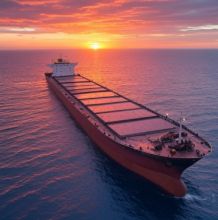 Capesizes get a new lease on life at the end of the week with a sudden upswing in demand for large-size bulkers in the East taking the trans-Pacific RV rates more than US$ 3,000 higher in 24 hours to the US$ 26,000s and beyond. Inter-Atlantic rates have also bounced back by a decent amount with around US$ 1,000 added day-on-day to the TARV assessment to place it just short of US$ 29,000. Owners are said to be already seeking US$ 30,000 on TARV. Panamaxes have yet to see the kind of sector-wide recovery that has supported the Capes, but there are some considerable improvements seen in the eastern basin with Pacific RVs bouncing back by some US$ 300-400 day-on-day to hit the mid-high US$ 12,000s on tonnage of 82,000 dwt. Smaller vessels of 76,000 dwt are also fetching middle US$ 11,000s on round voyage deals in the Pacific. FH is still under pressure with last-done in the US$ 22,000s range. (For news & updates on dry bulk shipbroking, subscribe to the BMTI Daily Report.)
Capesizes get a new lease on life at the end of the week with a sudden upswing in demand for large-size bulkers in the East taking the trans-Pacific RV rates more than US$ 3,000 higher in 24 hours to the US$ 26,000s and beyond. Inter-Atlantic rates have also bounced back by a decent amount with around US$ 1,000 added day-on-day to the TARV assessment to place it just short of US$ 29,000. Owners are said to be already seeking US$ 30,000 on TARV. Panamaxes have yet to see the kind of sector-wide recovery that has supported the Capes, but there are some considerable improvements seen in the eastern basin with Pacific RVs bouncing back by some US$ 300-400 day-on-day to hit the mid-high US$ 12,000s on tonnage of 82,000 dwt. Smaller vessels of 76,000 dwt are also fetching middle US$ 11,000s on round voyage deals in the Pacific. FH is still under pressure with last-done in the US$ 22,000s range. (For news & updates on dry bulk shipbroking, subscribe to the BMTI Daily Report.)
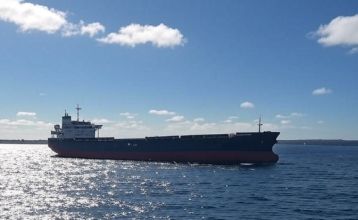 The East seems to be getting outperformed by the Atlantic whilst rate increases remain visible. Salt charterers took a 66,000 dwt from ECI via Australia to China at US$ 13,500 daily, which is not a bad deal for the owners, brokers said. A 35,000 dwt ship got US$ 13,000 daily with delivery Indonesia via Australia to China. China-linked charterers have been showing interest in a Supramax from ECI via SE Asia or Kalimantan to China at US$ 11,000 daily. Back haul business was done on Ultramax tonnage at US$ 14,250 for a trip from China to the Med. Rice charterers have been rating Supramaxes at US$ 12,000 daily for a trip from CJK to West Africa. Trips from the East to the WCSA might cost the charterers around US$ 13,500 on tonnage of 38,000 dwt. Period activity is unceasing. A 42,000 dwt got fixed for a short period at US$ 15,000 daily with delivery in Lanshan. Ultramax tonnage was bid a rate of US$ 14,000 daily for a five-year period. Another one has gone at US$ 16,250 for 2-3 laden legs. The owners of a 35,000 dwt vessel have been holding onto US$ 12,000 daily for 3-5 months. (For news & updates on dry bulk shipbroking, subscribe to the BMTI Daily Report.)
The East seems to be getting outperformed by the Atlantic whilst rate increases remain visible. Salt charterers took a 66,000 dwt from ECI via Australia to China at US$ 13,500 daily, which is not a bad deal for the owners, brokers said. A 35,000 dwt ship got US$ 13,000 daily with delivery Indonesia via Australia to China. China-linked charterers have been showing interest in a Supramax from ECI via SE Asia or Kalimantan to China at US$ 11,000 daily. Back haul business was done on Ultramax tonnage at US$ 14,250 for a trip from China to the Med. Rice charterers have been rating Supramaxes at US$ 12,000 daily for a trip from CJK to West Africa. Trips from the East to the WCSA might cost the charterers around US$ 13,500 on tonnage of 38,000 dwt. Period activity is unceasing. A 42,000 dwt got fixed for a short period at US$ 15,000 daily with delivery in Lanshan. Ultramax tonnage was bid a rate of US$ 14,000 daily for a five-year period. Another one has gone at US$ 16,250 for 2-3 laden legs. The owners of a 35,000 dwt vessel have been holding onto US$ 12,000 daily for 3-5 months. (For news & updates on dry bulk shipbroking, subscribe to the BMTI Daily Report.)
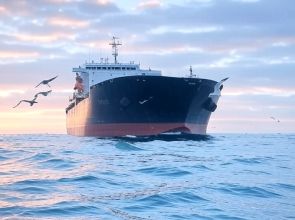 Mixed performance could rather adequately describe the Capesize spot market going into the final days of June with areas of strengthening demand being offset by continued weakness in others. South America has been the saviour of demand for the big bulkers this week with nearly every rate coming from NCSA or ECSA showing some kind of improvement. Brazil/China voyages have jumped beyond US$ 23/mt. The round voyage TC rates between China and Brazil, similarly, have leapt by US$ 1,500 to US$ 20,000 daily, shipbrokers confirm. (For news & updates on dry bulk shipbroking, subscribe to the BMTI Daily Report.)
Mixed performance could rather adequately describe the Capesize spot market going into the final days of June with areas of strengthening demand being offset by continued weakness in others. South America has been the saviour of demand for the big bulkers this week with nearly every rate coming from NCSA or ECSA showing some kind of improvement. Brazil/China voyages have jumped beyond US$ 23/mt. The round voyage TC rates between China and Brazil, similarly, have leapt by US$ 1,500 to US$ 20,000 daily, shipbrokers confirm. (For news & updates on dry bulk shipbroking, subscribe to the BMTI Daily Report.)
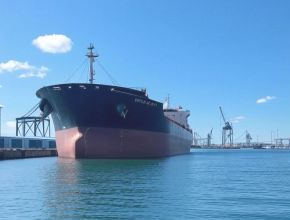 Panamaxes appear to be in danger of returning to their usual directionless mode of minimal rises and falls with trans-Atlantic RVs having failed to climb over US$ 13,000 on 82,000 dwt even as owners are doing their very best to make it happen. Front haul business on Kamsarmax tonnage is still trading at respectable levels of US$ 19-20,000 daily, depending on terms, though it is unknown if owners will be able to push these any higher before the month ends. Inter-Pac trips are holding to US$ 11-12,000 daily. USG delivery rates continue to surprise with trips to the Continent up to US$ 16,500 on Handysizes of 48,000 dwt and US$ 17,000 on 58,000 dwt vessels. Inter-Atlantic rates being fixed on 42,000 dwt ships ex-NCSA to the Med are said to be fixing high US$ 16,000s with owners sounding more aggressive in seeking US$ 17,000s for end-June positions. Inter-Pacific rates were observed as exceeding US$ 11,000 daily via CJK on larger Handysizes of 52,000 dwt. (For news & updates on dry bulk shipbroking, subscribe to the BMTI Daily Report.)
Panamaxes appear to be in danger of returning to their usual directionless mode of minimal rises and falls with trans-Atlantic RVs having failed to climb over US$ 13,000 on 82,000 dwt even as owners are doing their very best to make it happen. Front haul business on Kamsarmax tonnage is still trading at respectable levels of US$ 19-20,000 daily, depending on terms, though it is unknown if owners will be able to push these any higher before the month ends. Inter-Pac trips are holding to US$ 11-12,000 daily. USG delivery rates continue to surprise with trips to the Continent up to US$ 16,500 on Handysizes of 48,000 dwt and US$ 17,000 on 58,000 dwt vessels. Inter-Atlantic rates being fixed on 42,000 dwt ships ex-NCSA to the Med are said to be fixing high US$ 16,000s with owners sounding more aggressive in seeking US$ 17,000s for end-June positions. Inter-Pacific rates were observed as exceeding US$ 11,000 daily via CJK on larger Handysizes of 52,000 dwt. (For news & updates on dry bulk shipbroking, subscribe to the BMTI Daily Report.)
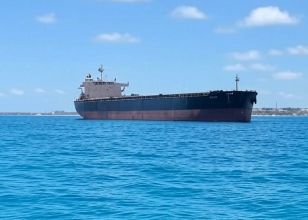 Flatter rate motion describes most Handysize trends going into the middle of the month, though hopes are still being ignited by the USG, where rates to NCSA are up to the US$ 14,000s on tonnage of 42,000 dwt. Grain shipments on tonnage of 37,000 dwt are said to be fixing rates of around US$ 15,000 daily from South Africa via EC Canada to the Med. A 20-year-old vessel of 27,000 dwt is reported to have fixed US$ 8,000 on tonnage open ECUK with SFMP moving ex-Riga to Casablanca passing Skaw (voyage equivalent is said to be around US$ 25.5/mt). Most cargoes are still being easily matched with tonnage. (For news & updates on dry bulk shipbroking, subscribe to the BMTI Daily Report.)
Flatter rate motion describes most Handysize trends going into the middle of the month, though hopes are still being ignited by the USG, where rates to NCSA are up to the US$ 14,000s on tonnage of 42,000 dwt. Grain shipments on tonnage of 37,000 dwt are said to be fixing rates of around US$ 15,000 daily from South Africa via EC Canada to the Med. A 20-year-old vessel of 27,000 dwt is reported to have fixed US$ 8,000 on tonnage open ECUK with SFMP moving ex-Riga to Casablanca passing Skaw (voyage equivalent is said to be around US$ 25.5/mt). Most cargoes are still being easily matched with tonnage. (For news & updates on dry bulk shipbroking, subscribe to the BMTI Daily Report.)
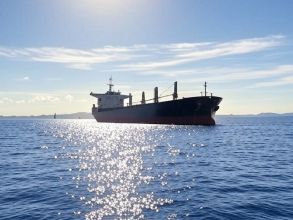 In the final days of May, there is not a lot of energy to be seen among the Ultramaxes with even the once-bullish front haul trips based on US Gulf delivery trending flat in the high teens of US$18-19,000 daily on tonnage of 63,500 dwt. Supramaxes of 58,000 dwt have been fixing business on the same run in the US$17,000s while Handymaxes of 52,000 dwt are lucky to fix anything over US$ 16,000 daily. Ultras from the East Med are being fixed to the Far East at circa US$ 12,250 daily. NoPac rounds on similar tonnage are being done in the middle US$ 11,000s range with scattered reports of US$ 12,500 daily on newbuilding tonnage. Brokers report that Indonesia rounds from/to South China have been securing upwards of US$ 13,500 daily for early June dates. (For news & updates on dry bulk shipbroking, subscribe to the BMTI Daily Report.)
In the final days of May, there is not a lot of energy to be seen among the Ultramaxes with even the once-bullish front haul trips based on US Gulf delivery trending flat in the high teens of US$18-19,000 daily on tonnage of 63,500 dwt. Supramaxes of 58,000 dwt have been fixing business on the same run in the US$17,000s while Handymaxes of 52,000 dwt are lucky to fix anything over US$ 16,000 daily. Ultras from the East Med are being fixed to the Far East at circa US$ 12,250 daily. NoPac rounds on similar tonnage are being done in the middle US$ 11,000s range with scattered reports of US$ 12,500 daily on newbuilding tonnage. Brokers report that Indonesia rounds from/to South China have been securing upwards of US$ 13,500 daily for early June dates. (For news & updates on dry bulk shipbroking, subscribe to the BMTI Daily Report.)
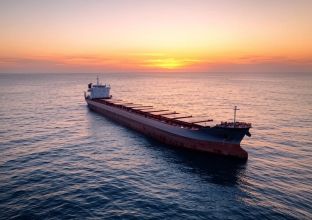 Capesizes can’t be held down for long with the week starting on a decidedly positive note and every Cape route—TC and voyage—showing some degree of improvement from levels before the weekend. Even if the moderate US$ 100-300 rise in time charter rates does not suggest a full recovery just yet, owners are optimistic that more of the same is on the way. Pacific RV rates pick up more than US$ 200 day-on-day to move toward US$ 14,000 daily on sizes of 180,000mt with eastern sentiment warming up. Panamaxes again play their reliable role as the flipside to the Capesizes with a minor downturn in rates providing a mirror to the recovering Capes. Only mild discounts of US$ 100-200 are being noted on time charter basis (TARV rates are still in the US$ 12,000s), but owners are putting a brave face on it in the hopes that early week jitters will be shaken off and new cargoes will put the wind back in the sails of the mid-range bulkers. Front haul on units of 82,000 dwt have dipped slightly into the high US$ 18,000s. (For news & updates on dry bulk shipbroking, subscribe to the BMTI Daily Report.)
Capesizes can’t be held down for long with the week starting on a decidedly positive note and every Cape route—TC and voyage—showing some degree of improvement from levels before the weekend. Even if the moderate US$ 100-300 rise in time charter rates does not suggest a full recovery just yet, owners are optimistic that more of the same is on the way. Pacific RV rates pick up more than US$ 200 day-on-day to move toward US$ 14,000 daily on sizes of 180,000mt with eastern sentiment warming up. Panamaxes again play their reliable role as the flipside to the Capesizes with a minor downturn in rates providing a mirror to the recovering Capes. Only mild discounts of US$ 100-200 are being noted on time charter basis (TARV rates are still in the US$ 12,000s), but owners are putting a brave face on it in the hopes that early week jitters will be shaken off and new cargoes will put the wind back in the sails of the mid-range bulkers. Front haul on units of 82,000 dwt have dipped slightly into the high US$ 18,000s. (For news & updates on dry bulk shipbroking, subscribe to the BMTI Daily Report.)
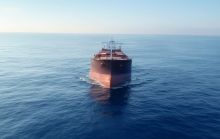 Western Panamax trades have undergone some renewal in late April with notable gains in cargo demand observed across the South American delivery routes and the North Atlantic at large. Front haul rates have been especially bullish of late with high teens of US$ 18,000s moving into the US$ 19,000s for tonnage of 82,000 dwt based on Far East delivery and NCSA delivery FH trips already at US$ 20,000. Supramax rates have stalled across most trade routes with the possible exception of West Africa delivery. A sudden burst in demand for export shipments from West Africa to the Far East has pushed rates into the highest US$ 13,000s on tonnage of 58,000 dwt (based on North China redelivery). Continental redelivery from West Africa has also seen rates climb to US$ 10,750 daily with talk of US$ 11,000 daily. (For news & updates on dry bulk shipbroking, subscribe to the BMTI Daily Report.)
Western Panamax trades have undergone some renewal in late April with notable gains in cargo demand observed across the South American delivery routes and the North Atlantic at large. Front haul rates have been especially bullish of late with high teens of US$ 18,000s moving into the US$ 19,000s for tonnage of 82,000 dwt based on Far East delivery and NCSA delivery FH trips already at US$ 20,000. Supramax rates have stalled across most trade routes with the possible exception of West Africa delivery. A sudden burst in demand for export shipments from West Africa to the Far East has pushed rates into the highest US$ 13,000s on tonnage of 58,000 dwt (based on North China redelivery). Continental redelivery from West Africa has also seen rates climb to US$ 10,750 daily with talk of US$ 11,000 daily. (For news & updates on dry bulk shipbroking, subscribe to the BMTI Daily Report.)
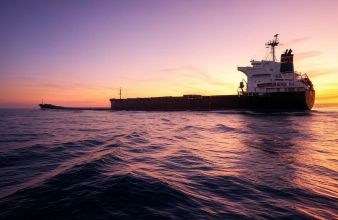 Daily discounts in the Pacific Capesizes are starting to slow from their earlier freefall, but continue to see downgrades of more than US$ 1,000 day-on-day on the round voyage rates, pushing last-done levels into the low-middle teens of US$ 13-14,000 on tonnage of 180,000 dwt on delivery Japan. Pressure has been unrelenting for most of April to date, but owners are optimistic that the floor will be reached this week already. This appears to be the case in the Atlantic where TARVs are evening out in the US$ 14,000s. The general cooling effect on world trade that has been worsened by the escalating trade war underway between the world’s biggest trade partners does no favours for the beleaguered Panamaxes. Even lingering congestion in the North Atlantic is not supporting rates as tonnage seems to be readily available for the majority of charterers who are actively seeking it out. As such, inter-Atlantic freight rates have fallen below US$ 9,000 daily on trans-Atlantic RVs based on UKC delivery and tonnage of 82,000 dwt. (For news & updates on dry bulk shipbroking, subscribe to the BMTI Daily Report.)
Daily discounts in the Pacific Capesizes are starting to slow from their earlier freefall, but continue to see downgrades of more than US$ 1,000 day-on-day on the round voyage rates, pushing last-done levels into the low-middle teens of US$ 13-14,000 on tonnage of 180,000 dwt on delivery Japan. Pressure has been unrelenting for most of April to date, but owners are optimistic that the floor will be reached this week already. This appears to be the case in the Atlantic where TARVs are evening out in the US$ 14,000s. The general cooling effect on world trade that has been worsened by the escalating trade war underway between the world’s biggest trade partners does no favours for the beleaguered Panamaxes. Even lingering congestion in the North Atlantic is not supporting rates as tonnage seems to be readily available for the majority of charterers who are actively seeking it out. As such, inter-Atlantic freight rates have fallen below US$ 9,000 daily on trans-Atlantic RVs based on UKC delivery and tonnage of 82,000 dwt. (For news & updates on dry bulk shipbroking, subscribe to the BMTI Daily Report.)
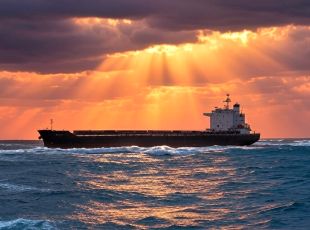 Clinker charterers have taken an Ultramax at US$ 16,600 daily from China via Campha to Bangladesh. A 32,000 dwt vessel was put on subs for a back haul trip from CJK to the Med via GoA at US$ 12,000. Ultramax owners have been showing interest in a trip from China to Brazil at US$ 9,500 daily. Demand from Australia has been tempting owners to up the ante, talking US$ 20,000 daily on a 40,000 dwt ship for a trip from Newcastle to PG. The owners of a 34,000 dwt ship were seeing US$ 16,000 daily from Port Kembla to the Mediterranean. Period business remains on the table with charterers rating Ultramax tonnage at US$ 14,000 daily for 4-6 months of trading with delivery South Korea. Charterers were rating a 39,000 dwt ship at US$ 13,000 daily for 4-7 months of trading with delivery Singapore. (For news & updates on dry bulk shipbroking, subscribe to the BMTI Daily Report.)
Clinker charterers have taken an Ultramax at US$ 16,600 daily from China via Campha to Bangladesh. A 32,000 dwt vessel was put on subs for a back haul trip from CJK to the Med via GoA at US$ 12,000. Ultramax owners have been showing interest in a trip from China to Brazil at US$ 9,500 daily. Demand from Australia has been tempting owners to up the ante, talking US$ 20,000 daily on a 40,000 dwt ship for a trip from Newcastle to PG. The owners of a 34,000 dwt ship were seeing US$ 16,000 daily from Port Kembla to the Mediterranean. Period business remains on the table with charterers rating Ultramax tonnage at US$ 14,000 daily for 4-6 months of trading with delivery South Korea. Charterers were rating a 39,000 dwt ship at US$ 13,000 daily for 4-7 months of trading with delivery Singapore. (For news & updates on dry bulk shipbroking, subscribe to the BMTI Daily Report.)
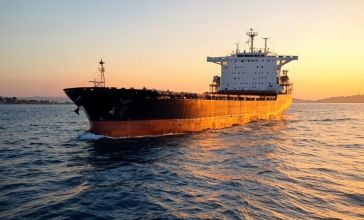 Handysize rates have managed to hold onto a modestly positive upside in most regards with charterers usually agreeing to minor premiums if it means they can secure tonnage sooner rather than later. A 2012-built vessel of 56,500 dwt is said to have fixed US$ 11,750 DOP for 15 Mar from Conakry via Saldanha Bay to China. Ships of 42,000 dwt are said to have fixed upwards of US$ 8,500 on inter-Atlantic business from the UKC-Med to USG, though others said the rates were closer to US$ 8,000 daily. Supramax front hauls have been climbing based on USG delivery with US$ 15,000s DOP now available on tonnage of 58,000 dwt and more than US$ 15,500 daily on 62,000 dwt vessels. Black Sea delivery on front haul rates is less buoyant with last-done being fixed in the low US$ 11,000s. USG trips to the Continent are fetching a flat US$ 15,000 on 58,000 dwt and as much as US$ 16,000 on larger vessels of 63,500 dwt. NCSA to the Far East is said to be fixing upwards of US$ 14,750 on 56,000 dwt. (For news & updates on dry bulk shipbroking, subscribe to the BMTI Daily Report.)
Handysize rates have managed to hold onto a modestly positive upside in most regards with charterers usually agreeing to minor premiums if it means they can secure tonnage sooner rather than later. A 2012-built vessel of 56,500 dwt is said to have fixed US$ 11,750 DOP for 15 Mar from Conakry via Saldanha Bay to China. Ships of 42,000 dwt are said to have fixed upwards of US$ 8,500 on inter-Atlantic business from the UKC-Med to USG, though others said the rates were closer to US$ 8,000 daily. Supramax front hauls have been climbing based on USG delivery with US$ 15,000s DOP now available on tonnage of 58,000 dwt and more than US$ 15,500 daily on 62,000 dwt vessels. Black Sea delivery on front haul rates is less buoyant with last-done being fixed in the low US$ 11,000s. USG trips to the Continent are fetching a flat US$ 15,000 on 58,000 dwt and as much as US$ 16,000 on larger vessels of 63,500 dwt. NCSA to the Far East is said to be fixing upwards of US$ 14,750 on 56,000 dwt. (For news & updates on dry bulk shipbroking, subscribe to the BMTI Daily Report.)
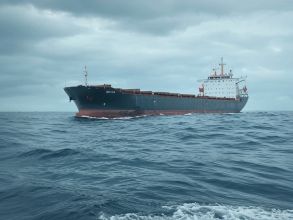 Bearish forces have been unrelenting on Panamax trades with another round of losses sustained across the spot market and daily cuts of more than US$ 200 on the Pac round voyage, taking it to US$ 11,000 daily on 82,000 dwt vessels. There has been talk of new agri-prods coming on stream from the South American export markets, although market players have not confirmed this as tangible reality thus far. Trans-Atlantic business is nearly as bearish with up to US$ 200 being lost by the day on the TARV rates on Kamsarmaxes with a little over US$ 6,000 now. (For news & updates on dry bulk shipbroking, subscribe to the BMTI Daily Report.)
Bearish forces have been unrelenting on Panamax trades with another round of losses sustained across the spot market and daily cuts of more than US$ 200 on the Pac round voyage, taking it to US$ 11,000 daily on 82,000 dwt vessels. There has been talk of new agri-prods coming on stream from the South American export markets, although market players have not confirmed this as tangible reality thus far. Trans-Atlantic business is nearly as bearish with up to US$ 200 being lost by the day on the TARV rates on Kamsarmaxes with a little over US$ 6,000 now. (For news & updates on dry bulk shipbroking, subscribe to the BMTI Daily Report.)
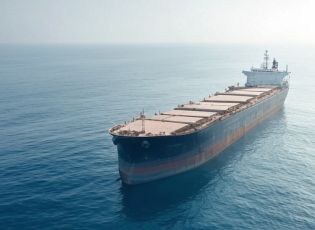 The Capesize recovery as such has developed into a more reliable force with rates on nearly every route rising by a solid margin in 24 hours at midweek with standard long hauls gaining more than US$ 300 day-on-day. Trans-Atlantic RVs, which are presently buoyant, have quite a ways to go to return to profitability with current levels still in the US$ 4,000s. But owners are hopeful that another few days of steady recovery will push them back into the US$ 6-7,000s by the end of the month. Hope—as ever—springs eternal. Eastern Panamaxes continue to be surprisingly bullish with Pacific round voyages pushing past US$ 10,000 daily at midweek (basis 82,000dwt). Smaller Panamaxes have seen their own Pac RVs rise into the US$ 9,000s with owns already seeking US$ 10,000s for their end-Feb positions. RV trips from the Far East to ECSA and back are also pushing into the US$ 11,000s on modern Kamsarmax tonnage and nearing US$ 10,500 daily on 76,000 dwt vessels. It is a tentatively optimistic time for shipowners who believe in the ongoing upside potential of the market. (For news & updates on dry bulk shipbroking, subscribe to the BMTI Daily Report.)
The Capesize recovery as such has developed into a more reliable force with rates on nearly every route rising by a solid margin in 24 hours at midweek with standard long hauls gaining more than US$ 300 day-on-day. Trans-Atlantic RVs, which are presently buoyant, have quite a ways to go to return to profitability with current levels still in the US$ 4,000s. But owners are hopeful that another few days of steady recovery will push them back into the US$ 6-7,000s by the end of the month. Hope—as ever—springs eternal. Eastern Panamaxes continue to be surprisingly bullish with Pacific round voyages pushing past US$ 10,000 daily at midweek (basis 82,000dwt). Smaller Panamaxes have seen their own Pac RVs rise into the US$ 9,000s with owns already seeking US$ 10,000s for their end-Feb positions. RV trips from the Far East to ECSA and back are also pushing into the US$ 11,000s on modern Kamsarmax tonnage and nearing US$ 10,500 daily on 76,000 dwt vessels. It is a tentatively optimistic time for shipowners who believe in the ongoing upside potential of the market. (For news & updates on dry bulk shipbroking, subscribe to the BMTI Daily Report.)
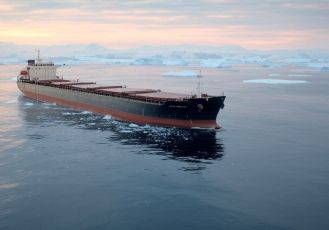 The start of the Lunar New Year has caused a quiet panic among owners of Ultramaxes with Indonesia rounds still doing better on Ultras than on Panamaxes, but also fixing rates of around US$ 6,500 daily at best on South China delivery/redel on 63,500 dwt ships. Southeast Asia delivery is showing Indonesia rounds being done in the US$ 5,000s for South China redelivery. Direct trips from EC India to China have been securing spot rates of around US$ 5,000 DOP on Ultras and US$ 4,500 on Supras. The owners are expecting to see more pressure this week. Pacific Handysize rates remain under pressure while Atlantic ones have largely stopped falling (with the exception of ECSA/ARAG, which is down to the US$11,000s). Handysizes of 38,000 dwt from the Continent to the ECSA are getting levels of around US$ 4,500 daily while USEC redelivery on the same run is fetching levels closer to US$ 5,500 daily on 42,000 dwt vessels. NCSA delivery, meanwhile, is still giving rather solid rates in the US$ 10,000s for UKC-Med redelivery, shipbrokers say. Such business is becoming quite thin on the ground, however. (For news & updates on dry bulk shipbroking, subscribe to the BMTI Daily Report.)
The start of the Lunar New Year has caused a quiet panic among owners of Ultramaxes with Indonesia rounds still doing better on Ultras than on Panamaxes, but also fixing rates of around US$ 6,500 daily at best on South China delivery/redel on 63,500 dwt ships. Southeast Asia delivery is showing Indonesia rounds being done in the US$ 5,000s for South China redelivery. Direct trips from EC India to China have been securing spot rates of around US$ 5,000 DOP on Ultras and US$ 4,500 on Supras. The owners are expecting to see more pressure this week. Pacific Handysize rates remain under pressure while Atlantic ones have largely stopped falling (with the exception of ECSA/ARAG, which is down to the US$11,000s). Handysizes of 38,000 dwt from the Continent to the ECSA are getting levels of around US$ 4,500 daily while USEC redelivery on the same run is fetching levels closer to US$ 5,500 daily on 42,000 dwt vessels. NCSA delivery, meanwhile, is still giving rather solid rates in the US$ 10,000s for UKC-Med redelivery, shipbrokers say. Such business is becoming quite thin on the ground, however. (For news & updates on dry bulk shipbroking, subscribe to the BMTI Daily Report.)
 Owners of Panamax bulkers welcome the recent trend of rates solidifying along sideways paths with charterers proving to be mostly satisfied with the nonetheless depressed spot rates available to them. Pacific rounds are still trading at around US$ 7,000 daily on modern tonnage of 82,000 dwt. The NoPac rounds on ships of 76,000 dwt are fetching closer to US$ 6,000 daily with some owners already relenting to US$ 5,000s on Japan redelivery. Comparable rate levels have been observed from Vietnam via Australia to China. (For news & updates on dry bulk shipbroking, subscribe to the BMTI Daily Report.)
Owners of Panamax bulkers welcome the recent trend of rates solidifying along sideways paths with charterers proving to be mostly satisfied with the nonetheless depressed spot rates available to them. Pacific rounds are still trading at around US$ 7,000 daily on modern tonnage of 82,000 dwt. The NoPac rounds on ships of 76,000 dwt are fetching closer to US$ 6,000 daily with some owners already relenting to US$ 5,000s on Japan redelivery. Comparable rate levels have been observed from Vietnam via Australia to China. (For news & updates on dry bulk shipbroking, subscribe to the BMTI Daily Report.)
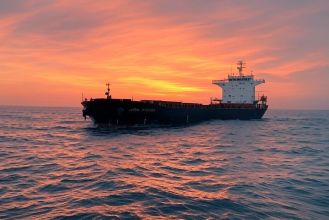 Capesizes start the week with a widely bullish spirit as front haul rates gain as much as US$ 4,000 over last-done levels to hit the US$ 35-36,000 range on tonnage of 180,000 dwt moving from the UKC-Med to the Far East. DOP rates from the ECSA area have been reported at over US$ 37,500 daily, according to some shipbrokers. The trans-Atlantic round voyages, meanwhile, pick up as much as US$ 1,500-2,000 day-on-day to hit the high teens of US$ 18-19,000 daily with shipowners once again calling the shots. (For news & updates on dry bulk shipbroking, subscribe to the BMTI Daily Report.)
Capesizes start the week with a widely bullish spirit as front haul rates gain as much as US$ 4,000 over last-done levels to hit the US$ 35-36,000 range on tonnage of 180,000 dwt moving from the UKC-Med to the Far East. DOP rates from the ECSA area have been reported at over US$ 37,500 daily, according to some shipbrokers. The trans-Atlantic round voyages, meanwhile, pick up as much as US$ 1,500-2,000 day-on-day to hit the high teens of US$ 18-19,000 daily with shipowners once again calling the shots. (For news & updates on dry bulk shipbroking, subscribe to the BMTI Daily Report.)
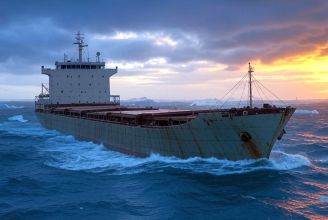 Atlantic Handysizes are presently outperforming their eastern counterparts insofar as their rates are holding to last-done and not coming under the kind of pressure being seen in Southeast Asia. As such, northbound trips from Southeast Asia to Singapore-Japan on tonnage of 38-42,000 dwt have slipped into the US$ 11,000s after trading in the low US$ 12,000s in early December. The inter-Atlantic trips (UKC-Med to USEC, for example) are holding steady in the higher US$ 8,000s and lower US$ 9,000s on tonnage of 48,000 dwt. One 2011-built vessel of 57,000 dwt open Mumbai is said to have fixed US$ 9,500-9,750 daily from Mina Saqr to AG-EC India. (For news & updates on dry bulk shipbroking, subscribe to the BMTI Daily Report.)
Atlantic Handysizes are presently outperforming their eastern counterparts insofar as their rates are holding to last-done and not coming under the kind of pressure being seen in Southeast Asia. As such, northbound trips from Southeast Asia to Singapore-Japan on tonnage of 38-42,000 dwt have slipped into the US$ 11,000s after trading in the low US$ 12,000s in early December. The inter-Atlantic trips (UKC-Med to USEC, for example) are holding steady in the higher US$ 8,000s and lower US$ 9,000s on tonnage of 48,000 dwt. One 2011-built vessel of 57,000 dwt open Mumbai is said to have fixed US$ 9,500-9,750 daily from Mina Saqr to AG-EC India. (For news & updates on dry bulk shipbroking, subscribe to the BMTI Daily Report.)
 Panamax spot markets have endured another week of steady pressure and lower rates with the relative strength in new activity across the Atlantic still lending little, if any, support to long haul freight levels. Inter-Atlantic Kamsarmax trips (basis 82,000 dwt) have been securing upwards of US$ 11,500 from the Continent to the USG, though owners say such business has been sporadic at best. Pacific activity has been spotty with owners settling for around US$ 11,000 on NoPac round voyages. (For news & updates on dry bulk shipbroking, subscribe to the BMTI Daily Report.)
Panamax spot markets have endured another week of steady pressure and lower rates with the relative strength in new activity across the Atlantic still lending little, if any, support to long haul freight levels. Inter-Atlantic Kamsarmax trips (basis 82,000 dwt) have been securing upwards of US$ 11,500 from the Continent to the USG, though owners say such business has been sporadic at best. Pacific activity has been spotty with owners settling for around US$ 11,000 on NoPac round voyages. (For news & updates on dry bulk shipbroking, subscribe to the BMTI Daily Report.)
 Recent days of consecutive gains for the Capesizes have pushed rates back up to near their YTD peaks of the early summer. Chartering activity was buoyed by steady and growing cargo demand in both hemispheres, seemingly unhindered by the loss of broking players from the magnet effect of the Eisbein weekend in Hamburg. Adverse weather conditions have been tying up vessels across several big Pacific runs, adding to the tightening in available tonnage, making charterers scramble even more for ships as cargo requirements grow apace. Inter-Pacific voyage rates have surged over the past week with W.Australia delivery to S.China reaching upwards of US$ 9.8/mt after trading at around US$ 8.6/mt just a week earlier. In the western hemisphere, trans-Atlantic RVs have surged nearly US$ 2,000 day-by-day to push levels back to the high teens of US$ 18,000. Front haul trips have pushed past US$ 40,000 daily.
Recent days of consecutive gains for the Capesizes have pushed rates back up to near their YTD peaks of the early summer. Chartering activity was buoyed by steady and growing cargo demand in both hemispheres, seemingly unhindered by the loss of broking players from the magnet effect of the Eisbein weekend in Hamburg. Adverse weather conditions have been tying up vessels across several big Pacific runs, adding to the tightening in available tonnage, making charterers scramble even more for ships as cargo requirements grow apace. Inter-Pacific voyage rates have surged over the past week with W.Australia delivery to S.China reaching upwards of US$ 9.8/mt after trading at around US$ 8.6/mt just a week earlier. In the western hemisphere, trans-Atlantic RVs have surged nearly US$ 2,000 day-by-day to push levels back to the high teens of US$ 18,000. Front haul trips have pushed past US$ 40,000 daily.
For exclusive news and updates about dry bulk shipbroking, subscribe to the BMTI Daily Report.
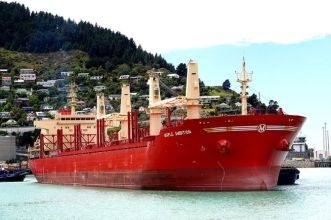 Atlantic Ultramaxes are buoyed by the success of the USG delivery business with front hauls pushing steadily toward US$ 25,000 daily on modern tonnage of 63,500 dwt bound for the Far East. Spot rates for Black Sea front hauls have also climbed over US$ 20,000 daily for the first time this month and shipowners believe there is still plenty more upside to potential go. Handysize vessels have also been faring well in the Atlantic with positive movement in rates from NCSA to the Continent moving into the US$ 15,000s on tonnage of 38-42,000 dwt. Inter-Pacific Handysizes continue to trade in the US$ 14,000s.
Atlantic Ultramaxes are buoyed by the success of the USG delivery business with front hauls pushing steadily toward US$ 25,000 daily on modern tonnage of 63,500 dwt bound for the Far East. Spot rates for Black Sea front hauls have also climbed over US$ 20,000 daily for the first time this month and shipowners believe there is still plenty more upside to potential go. Handysize vessels have also been faring well in the Atlantic with positive movement in rates from NCSA to the Continent moving into the US$ 15,000s on tonnage of 38-42,000 dwt. Inter-Pacific Handysizes continue to trade in the US$ 14,000s.
For exclusive news and updates about dry bulk shipbroking, subscribe to the BMTI Daily Report.
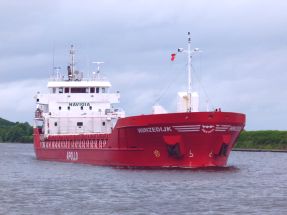 Greek Med: Steady cargoes are keeping steady rates in the area. Corn cargoes of 3,000mt (51′) are fixing rates of US$24-25/mt from Izmail to Patras, brokers say. Grain of 5,000mt (49′) from the Odessa area can fetch US$ 24-25/mt to WC Greece while the same cargo from Reni to EC Greece can get US$ 22/mt. Turkish Med: Grain cargoes of 5,000mt (54′) from the Danube River (ex-Reni) are securing upwards of US$ 24/mt to Mersin and, according to shipbrokers, US$ 25/mt to Iskenderun. Soybean cargoes of 6,000 (52′) from Chornomorsk have been actively getting chartered to Iskenderun in the US$ 19-21/mt range. Adriatic Sea: Rebar of 3,000mt was fetching upwards of US$ 17-18/mt ex-Icdas to Durres in the last days of September. Minerals of 4,500mt are being concluded on urgent terms at US$ 31/mt ex-Tuapse to Koper, owners report. Grain of 5,000mt (46′) did US$ 29.5/mt ex-Galatz to Italian Adriatic. Grain for Split/Bari business is fetching US$ 12/mt.
Greek Med: Steady cargoes are keeping steady rates in the area. Corn cargoes of 3,000mt (51′) are fixing rates of US$24-25/mt from Izmail to Patras, brokers say. Grain of 5,000mt (49′) from the Odessa area can fetch US$ 24-25/mt to WC Greece while the same cargo from Reni to EC Greece can get US$ 22/mt. Turkish Med: Grain cargoes of 5,000mt (54′) from the Danube River (ex-Reni) are securing upwards of US$ 24/mt to Mersin and, according to shipbrokers, US$ 25/mt to Iskenderun. Soybean cargoes of 6,000 (52′) from Chornomorsk have been actively getting chartered to Iskenderun in the US$ 19-21/mt range. Adriatic Sea: Rebar of 3,000mt was fetching upwards of US$ 17-18/mt ex-Icdas to Durres in the last days of September. Minerals of 4,500mt are being concluded on urgent terms at US$ 31/mt ex-Tuapse to Koper, owners report. Grain of 5,000mt (46′) did US$ 29.5/mt ex-Galatz to Italian Adriatic. Grain for Split/Bari business is fetching US$ 12/mt.
Subscribe to the BMTI Short Sea Report today for exclusive news on the European Short Sea markets.
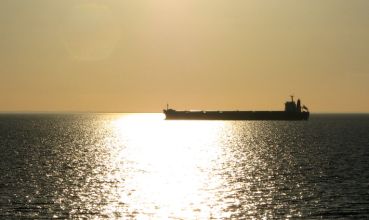 The newfound strength of eastern Panamaxes has yet to ripple through the entire sector, though Pac-based Panamaxes are still building steam with RVs on 82,000 dwt now trading just below US$ 14,000 daily with US$ 15,000 levels in negotiations for the beginning of next week. Atlantic rates are less enthusiastic at the moment as front hauls on Kamsarmaxes refuse to rise much higher than US$ 21,000 daily.
The newfound strength of eastern Panamaxes has yet to ripple through the entire sector, though Pac-based Panamaxes are still building steam with RVs on 82,000 dwt now trading just below US$ 14,000 daily with US$ 15,000 levels in negotiations for the beginning of next week. Atlantic rates are less enthusiastic at the moment as front hauls on Kamsarmaxes refuse to rise much higher than US$ 21,000 daily.
For exclusive news and updates about dry bulk shipbroking, subscribe to the BMTI Daily Report.
Freights are climbing again in the southern European trades to the delight of owners working in the area and running against the prevailing summer holidays of northern Europe. Freights for grain ex-Rostov to Marmara are up to US$ 26/mt while grain ex-Rostov to the Egyptian Med is up to US$ 42-43/mt, depending on terms (basis grain of 5,000mt). Owners are seeking higher rates on grains from Danube River ports as well with grain cargoes from Reni now fetching US$ 17/mt and even US$ 18/mt to the Sea of Marmara (stowage of 53′) on 5,000mt. Grain ex-Reni to the Italian Adriatic has been fetching rates of US$ 26/mt, brokers report. Danube freights are nonetheless far below their levels of one year ago, owners note, when Reni/Marmara trades were up to US$ 42/mt (now securing less than half of this).
Subscribe to the BMTI Short Sea Report today for exclusive news on the European Short Sea markets.
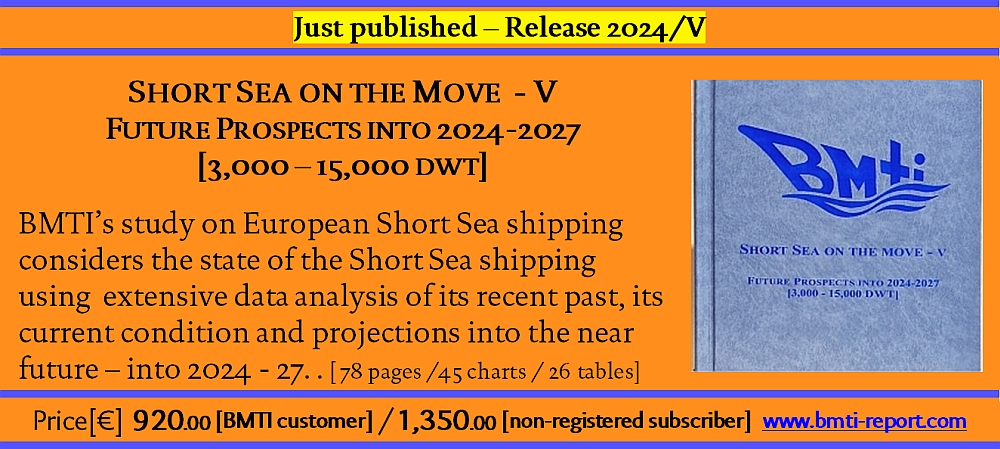
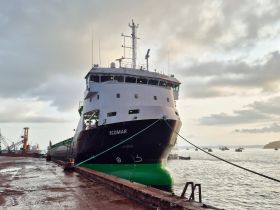 Even with the stabilizing trends of early July having comforted owners about their summer prospects, overall cargo demand continues to wane inexorably across the European coaster trades. Week-on-week discounts have been manageable, but they are discounts nonetheless and owners could be dealing with some serious cumulative discounts by the time holiday season is through. Northbound trips from the North of Spain to Ireland are still fetching middle EUR 20s/mt of EUR 25/mt, depending on terms, though charterers have been having some success in slowly moving that range downward over the course of the month so far. Southbound trips remain comparatively more lucrative with talk of EUR 50s/mt still being fixed on the more urgent trades from SCUK to the Turkish Med. Other sources say high EUR 40s/mt are the best that an owner could hope for on this run in the current spot market. Steady-to-slumping bunker prices have not given owners any leverage in negotiations either, leaving them with little recourse but to take what the charterers are offering.
Even with the stabilizing trends of early July having comforted owners about their summer prospects, overall cargo demand continues to wane inexorably across the European coaster trades. Week-on-week discounts have been manageable, but they are discounts nonetheless and owners could be dealing with some serious cumulative discounts by the time holiday season is through. Northbound trips from the North of Spain to Ireland are still fetching middle EUR 20s/mt of EUR 25/mt, depending on terms, though charterers have been having some success in slowly moving that range downward over the course of the month so far. Southbound trips remain comparatively more lucrative with talk of EUR 50s/mt still being fixed on the more urgent trades from SCUK to the Turkish Med. Other sources say high EUR 40s/mt are the best that an owner could hope for on this run in the current spot market. Steady-to-slumping bunker prices have not given owners any leverage in negotiations either, leaving them with little recourse but to take what the charterers are offering.
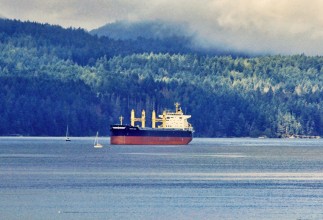 The chartering market within the Atlantic remains a mixed bag of opportunities. Baltic-Black Sea range not overly amusing whilst USG-W.Africa and, obviously, the ECSA seem the better areas to be, though a softening trend seems slowly becoming more evident. Off the Continent, Supra chars were shrugging their shoulders when they were seeing tonnage at US$ 25,000 for a quick eight-day employment from GNS to the Netherlands, for which trade realistic owns were coming up with US$ 12,500 daily. Scrap charterers were discussing 58,000 dwt at US$ 10-11,000 daily for a trip from GNS to eastern Med. Steel charterers were rating 53,000 dwt tonnage at US$ 11,000 daily for a trip to USEC. Considering this, dropping a Supramax on subs at US$ 14,500 daily for similar is only logical. Trips with clinker from the West Mediterranean to West Africa are down to US$ 13,500 daily on Ultramax tonnage. Continue reading
The chartering market within the Atlantic remains a mixed bag of opportunities. Baltic-Black Sea range not overly amusing whilst USG-W.Africa and, obviously, the ECSA seem the better areas to be, though a softening trend seems slowly becoming more evident. Off the Continent, Supra chars were shrugging their shoulders when they were seeing tonnage at US$ 25,000 for a quick eight-day employment from GNS to the Netherlands, for which trade realistic owns were coming up with US$ 12,500 daily. Scrap charterers were discussing 58,000 dwt at US$ 10-11,000 daily for a trip from GNS to eastern Med. Steel charterers were rating 53,000 dwt tonnage at US$ 11,000 daily for a trip to USEC. Considering this, dropping a Supramax on subs at US$ 14,500 daily for similar is only logical. Trips with clinker from the West Mediterranean to West Africa are down to US$ 13,500 daily on Ultramax tonnage. Continue reading
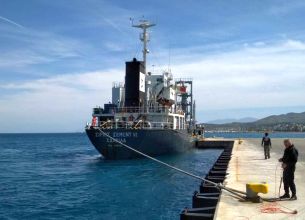 Capesize freights look like they might already be getting re-energized a la last week with front hauls swiftly returning to the psychologically powerful US$ 50,000 daily line and Pacific RVs bounding over US$ 26,000 daily. Trans-Atlantic RVs are still moving sideways in the US$ 21,000s, but owners say they expect things to start recovering there as well if the jump in front hauls is any indication of things to come. China/Brazil RV freights are also holding to unchanged levels in the US$ 25,000s.
Capesize freights look like they might already be getting re-energized a la last week with front hauls swiftly returning to the psychologically powerful US$ 50,000 daily line and Pacific RVs bounding over US$ 26,000 daily. Trans-Atlantic RVs are still moving sideways in the US$ 21,000s, but owners say they expect things to start recovering there as well if the jump in front hauls is any indication of things to come. China/Brazil RV freights are also holding to unchanged levels in the US$ 25,000s.

